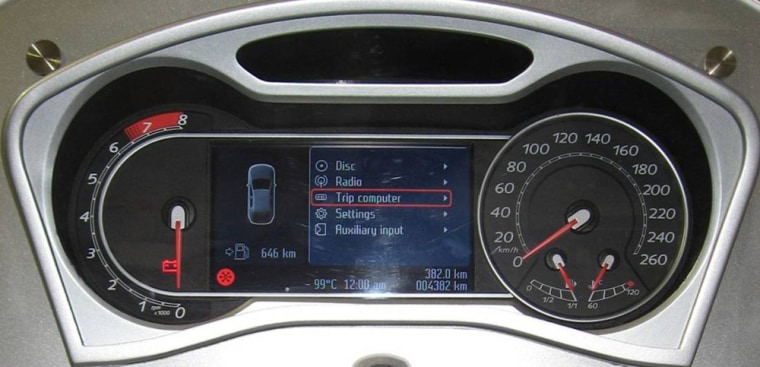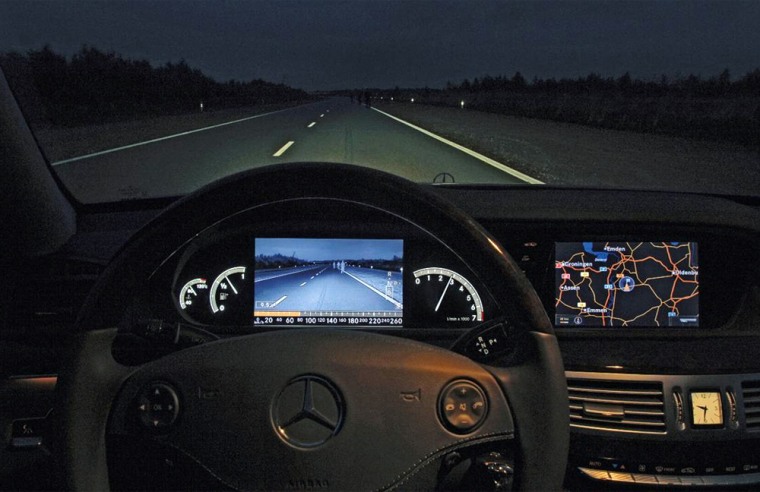Over the decades of the “Star Trek” TV and movie franchise, the ship’s computer displays evolved from steam-age dials and switches to large 21st-century video displays that could be configured to perform seemingly any task.
Most of today’s cars retain those seemingly Victorian buttons, switches, knobs and analog gauges, though they are no longer made of brass. But an emerging generation of new models is making the move toward virtual displays that, as with the later iterations of the Enterprise (but without the suspect plots and thin character development) permits a single display to be configured for numerous tasks.
LCD displays that can show any image or information the car’s computer can conjure are beginning to appear in some new models, and the first car with a video-only instrument panel is due to debut later this year. For now, we have concepts of the idea, and production cars that supplement physical analog gauges with LCD video screens.
One of the flashiest on the road today is the new Ford Fusion Hybrid, whose sole physical instrument is the big, round analog speedometer in the middle of the instrument panel in front of the driver.
On each side of the analog gauge is a 4.3-inch LCD display, looking like a pair of iPhones built into the dashboard. The displays are programmed to show a variety of information that is particularly relevant to the driver of a hybrid car, with the goal of coaching them on fuel-efficient driving habits.
The inverse of this approach is that used in the Mercedes-Benz flagship S-Class sedan, which has a central LCD display surrounded by conventional instruments. This screen’s primary function: simulate a round, analog speedometer that matches the other gauges so accurately that it is easy to miss the fact that the speedometer doesn’t really exist.
The company uses a virtual speedometer so that in the dark the car’s infrared night vision can display a view of the road ahead on the LCD screen. It also shows a small, linear analog speedometer across the bottom of the infrared video image. So, forget any notion of blaming the lack of a speedometer for any speeding tickets in the Mercedes.
Chrysler concept car
These are the first steps, but very soon we’ll see a car from an unnamed European manufacturer that uses a 12.3-inch video screen on the dashboard to replace the car’s conventional instrumentation, according to Visteon Corp., the company that makes the display.
For now, we have concept cars like the Chrysler 200C demonstrating what such instruments panels might look like in the future. Chrysler visualization designer Brad Gieske gives a dizzying demonstration of how drivers can select what information is shown using touch input on the screen as on an iPhone, or through voice command. Such input capabilities should spell the end of the quasi-mouse input device of the BMW iDrive and its knock-offs.
The Chrysler’s system encompasses not only the standard instrument controls, but also the those for infotainment and heating and air conditioning. This is significant because it permits the computer to put relevant information on the display in front of the driver when it is needed, and to show it on the peripheral screens when it is not of immediate concern.
“We are very excited about this,” said Gieske. “We feel very strongly that this is where the future is headed.”

Eventually, anyway. By 2013 about 5 percent of new cars will have LCD-only virtual instrument panels, forecasts James Farell, senior manager of driver information platforms and advanced projects at Visteon. Another 15 percent will have combination systems, using both LCD panels and physical instruments, like those on the Fusion Hybrid and S-Class, he said.
With infinite flexibility, these screens can provide drivers information they didn’t realize they wanted, shown in ways that are obvious even though they’ve never been seen before. The Fusion, for example, has a screen that shows the RPM of the car’s gas engine, depicted on a sliding vertical linear scale.
The new twist is a yellow band that colors a portion of that scale when conditions are right for the car to run on battery electric power alone (meaning the battery has enough juice and the gas engine has warmed up to operating temperature so it's ready if needed). By treading softly enough to keep the needle within the yellow zone, the driver can run the Fusion on electric power at speeds up to 47 mph without inadvertently starting the gas engine.
Another screen shows how much power is consumed by the various accessory systems, so instead of wondering how much fuel economy it costs to run the air conditioner or seat heaters, you can see that information displayed on the Fusion’s dashboard and decide for yourself whether it is worth using those features.
The distraction factor
Research is the key to making this new data a reality, said Gieske. “A lot of usability studies need to be done. Designing these is not a no-brainer.”
As on the Mercedes, having a video screen on the dashboard also provides a place to display video images from sources such as cameras that provide rear views when backing up the car.
Concern for legibility and distraction is why none of the systems on the road today or in development permits the driver to put their own images on the screen, like wallpaper on a computer screen, said Farell.
Add-ons, such as USB flash drives holding personal photos, aren’t allowed, he said. The federal government strictly regulates the design of gauges to ensure legibility, and fear of running afoul of those regulations will keep your kids’ school pictures off your dashboard for the foreseeable future.
In the meanwhile, engineers and designers are working furiously to learn what they can show and how best to depict it. When Fusion designers wanted to use a tree metaphor to illustrate the driver’s proficiency at fuel efficiency, they found the resulting forest distracted drivers in tests conducted by Ford. So they changed the tree to leaves growing on vines to show improved fuel economy, an image drivers apparently found less distracting.
The toughest challenge for engineers is simulating the appearance of analog gauges and the smooth swing of their pointer needles.
“Anti-aliasing of pointer needles is critical to avoid ‘jaggies,’ ” said Farell. “The eye can quickly tell if you have skipped a step in the pointer movement.”
And, with the virtual display of old-fashioned analog gauges being a formidable challenge for those creating futuristic video displays, well, it's an irony worthy of a “Star Trek” episode. One of the good ones.
